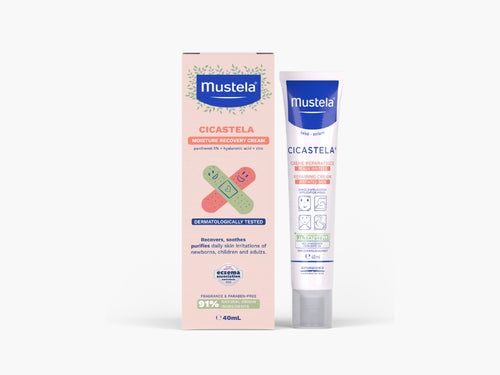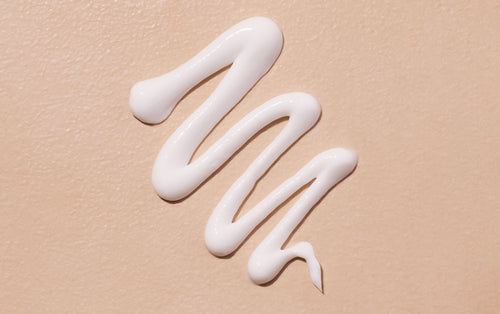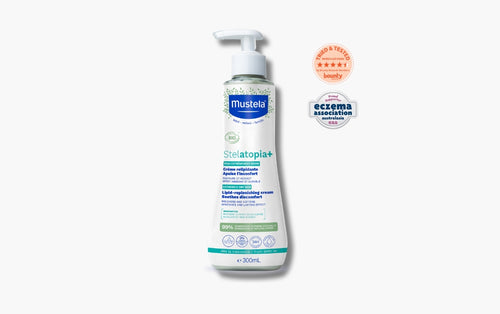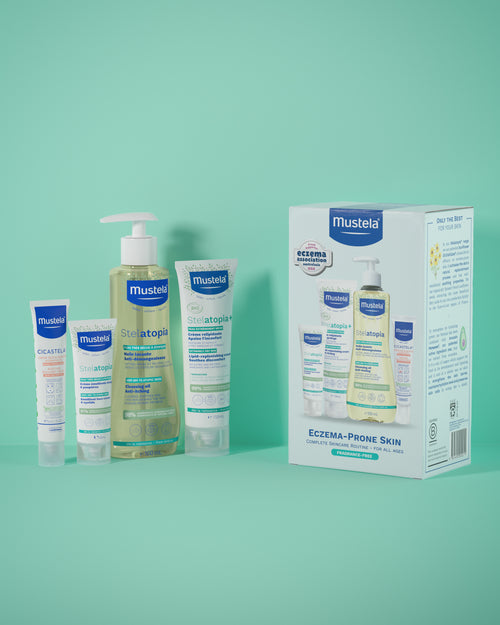What is dream feeding exactly?
Dream feeding is defined by Tracey Hogg, who first used the term, as feeding a small child while they are asleep. To achieve this, you gently put your sleeping infant in a feeding position while attempting to trigger the rooting reflex by softly massaging the baby's lips and providing breastmilk or a bottle. Many infants are able to feed in this manner without waking up (Hogg and Blau 2005).
However, other people use the term "dream feed" in a different way. For example, Harvey Karp mentions purposefully rousing a baby in a blog post: "Dream feeding is when you wake your baby to nurse one last time before you turn in for the night" (Karp, n.d.).
Others refer to any attempt to get your infant to "tank up" before you go to bed as a "dream feed," or "feed." You can either wake your child up for this purpose or feed them when they are already awake.
In summary, there are many different ways that "dream feeding" is characterised. But all of the descriptions have one thing in common: they all refer to feeding a baby a large meal (a "focal feed") just before going to sleep.
The scientific argument for dream feeds
A part of a newborn's frequent and easy awakening is hunger. This is what makes caring for newborns so exhausting, 24 hours a day, feeding them every few hours! However, if you go to bed soon after your baby has a substantial meal, you might have a little longer time before they wake up again. And every little bit helps, especially if it allows you to get at least four unbroken hours of sleep.
Why? The first few sleep cycles of the night are when our brains are programmed to prioritise deep, slow wave sleep, the most restorative period of sleep. Therefore, the first 4-5 hours of sleep should be the part of each night's sleep cycle that is protected from disturbances.
Many parents find it impossible to reach this ideal state in the first few days after giving birth. If that's the case, you should have hope: People who are severely sleep deprived, who have a significant NREM3 deficiency, frequently experience an increase in the duration and intensity of their brief naps as a result. You might have adequate NREM3 if you can take a few 30-minute naps during the day to offset most of the negative effects of sleep deprivation (Farout et al 2015).
However, getting your infant to have at least one 4-5 hour sleep session that starts around the time you go to bed can make your life easier. You will have the chance to get the very minimal quantity of rest that you require to stay healthy. Additionally, it might be a beneficial step in helping your infant develop mature, nightly sleep patterns.
But is dream feeding effective? Does it really result in longer infant naps?

It appears to work, according to many parents who have given it a try. As the weeks pass, their infants begin to sleep in longer, more uninterrupted stretches. However, we would naturally anticipate that to happen. When everything goes as planned, young infants establish more consistent nighttime sleep patterns.
A study that followed the sleep-related activities of 313 infants over time provides more convincing supporting data. When babies were just one month old, Mirja Quante and her colleagues conducted interviews with the parents of the infants. They discovered which of the parents had a habit of giving their children a substantial feed (bottle or breastfeeding) before night.
The length of newborn sleep cycles was examined, and the researchers discovered a definite pattern: Babies who had had focused, bedtime meals at one month postpartum tended to sleep for longer lengths by the time they were six months old. In fact, there was a sizable difference. The longest nighttime sleep period averaged an additional 62 minutes when compared to babies who hadn't gotten these bedtime meals (Quante et al 2022).
In one randomised trial, researchers observed how 125 families with young infants responded to a thorough sleep education program (Paul et al 2016). The program covered how to give newborns dream feeds, but it also contained more than 20 other suggestions, such as advice on how to swaddle babies, use pacifiers, play white noise, establish nighttime rituals, prevent overstimulation, and provide babies opportunities to self-settle or self-soothe.
Do infants in the therapy group sleep more soundly than infants in the control group? Yes. However, it is impossible to determine how much of the outcome may be attributed to dream feeding on its own. This leaves us with a far more limited study that examined dream feeds as one of three intervention components. In this study,13 parents were allocated at random to use all three of these strategies:
-
Give babies a large feed between ten o'clock at night and midnight.
-
By first "carrying out alternate caretaking activities" like re-swaddling, and strolling babies around, you can gradually increase the time between night feedings.
-
Infant exposure to social stimulation and artificial light at night should be kept to a minimum in order to "maximise environmental contrasts between day and nighttime."
All 13 of the parents who have used this three-part method at eight weeks postpartum stated that their infants were soundly sleeping every night between midnight and five in the morning. In comparison, only three of the thirteen parents in the control group mentioned this developmental milestone (Pinilla and Birch 1993).
There is hence reasons to believe that the intervention was effective, although we are unsure of the extent to which dream feeding contributed to the final result. According to separate studies, the other two strategies (#2 and #3) may be able to assist infants in acquiring better sleeping habits. Dream feeding was probably simply one of many contributing elements.
How about the negative side? Does dream feeding have any proof that it can be harmful?

Dream feeding might not be the best option for some young infants, such as those who are having trouble gaining weight. So, make sure to ask your child's Paediatrician. It's also important to take into account, the possibility that some dream feeding techniques may negatively impact a baby's sleep patterns.
For instance, let's say you follow Harvey Karp's advice and purposefully wake your child every night to breastfeed or give him a bottle. Could the emergence of consolidated nighttime sleep be hampered or delayed by these parent-initiated night time wakings? Maybe, however serious experiments haven't been performed to prove the hypothesis. If you compare the benefits to the potential drawbacks, it might not be significant.
For instance, if your baby is prone to reflux, it’s probably better for your baby to spend time in an upright position after feeding. While it’s not impossible for babies to sleep through such positioning, it’s more compatible with being awake.
Additionally, some people contend that it's dangerous to let babies doze off while they're being fed. Once more, this is a time-tested parenting strategy. But it might result in outcomes that some parents would rather not see. When infants establish the habit of dozing off during meals, they may become dependent on feeding as a prerequisite to dozing off, which may delay the development of self-settle (the ability to fall asleep independently, without signalling caregivers).
Therefore, supporters of self-settling advise parents to dream-feed their infants while they are still awake — no snoozing is allowed. After that, parents should lead their newborns through another peaceful evening ritual (such as singing a lullaby) right away before putting them to bed when they are still awake but drowsy. Using this strategy may ensure that infants learn to soothe themselves at a younger age (e.g., Paul at al 2016).
But where do these different worries take us? They can be summed up as follows.
The Pros and Cons of dream feeding
Pros:
-
Crucial relief for parents. It's possible that the post-feed sleep period will stay longer than usual, providing you additional chances to get some NREM3 sleep. Your health and wellbeing could be significantly impacted by even an additional half hour.
-
Potential support for the development of infant sleep patterns. In combination with other tactics — like gradually lengthening the intervals between nighttime feedings — the practice might help speed up the shift to a more mature sleep schedule.
Cons
-
Infants with special needs might not be the best candidates. Dream feeding might not be the best option for infants who are underweight or experiencing certain medical issues. Before attempting, speak to your infant’s Paediatrician.
-
Possibly upsetting for some infants: If this is a personal concern for you, you may choose to schedule focal feeds so that they coincide with a time when your baby is already awake.
-
For infants who are prone to reflux, the "feed them while they sleep" kind of dream feeding might not be the best option. It's preferable for them to be upright after eating.
-
Babies' ability to self-settle may take longer to develop if they are permitted to doze off during a dream feed.
What if you attempt dream feeding and it is unsuccessful?
Babies awaken for a variety of reasons besides hunger. Everyone wakes up multiple times throughout the night, and babies are no different. In fact, for young babies, these arousals may aid in lowering the incidence of SIDS.
So, while it may make your life more difficult if your infant isn't sleeping for five hours straight at eight weeks old, it's neither unusual nor a sign that something is wrong with your baby. The sleeping habits of infants vary greatly from person to person. Infants vary in how long and how well they sleep.
Additionally, bear in mind that this isn't a "super-baby" that never wakes up when you hear other parents boasting about their child who "sleeps through the night." In reality, the baby is staying reasonably quiet during nighttime awakenings and returning to sleep on his or her own.
Your ultimate goal is to assist your infant in developing their self-settling skill. It might be simpler if you "tank up," but that's probably just one of many factors. Dream feeds should be used in conjunction with a number of other proven strategies. Give dream feeding a pass if it's challenging to apply and doesn't seem to be helping you.
When should you stop dream feeding?
Another issue that has not been investigated by scientific research is this one. According to Tracey Hogg, "tanking up" is still beneficial till your baby is 6 months old (Hogg and Blau 2005). Nevertheless, other people advise stopping dream feeding by 16 weeks (Paul et al 2016).



















